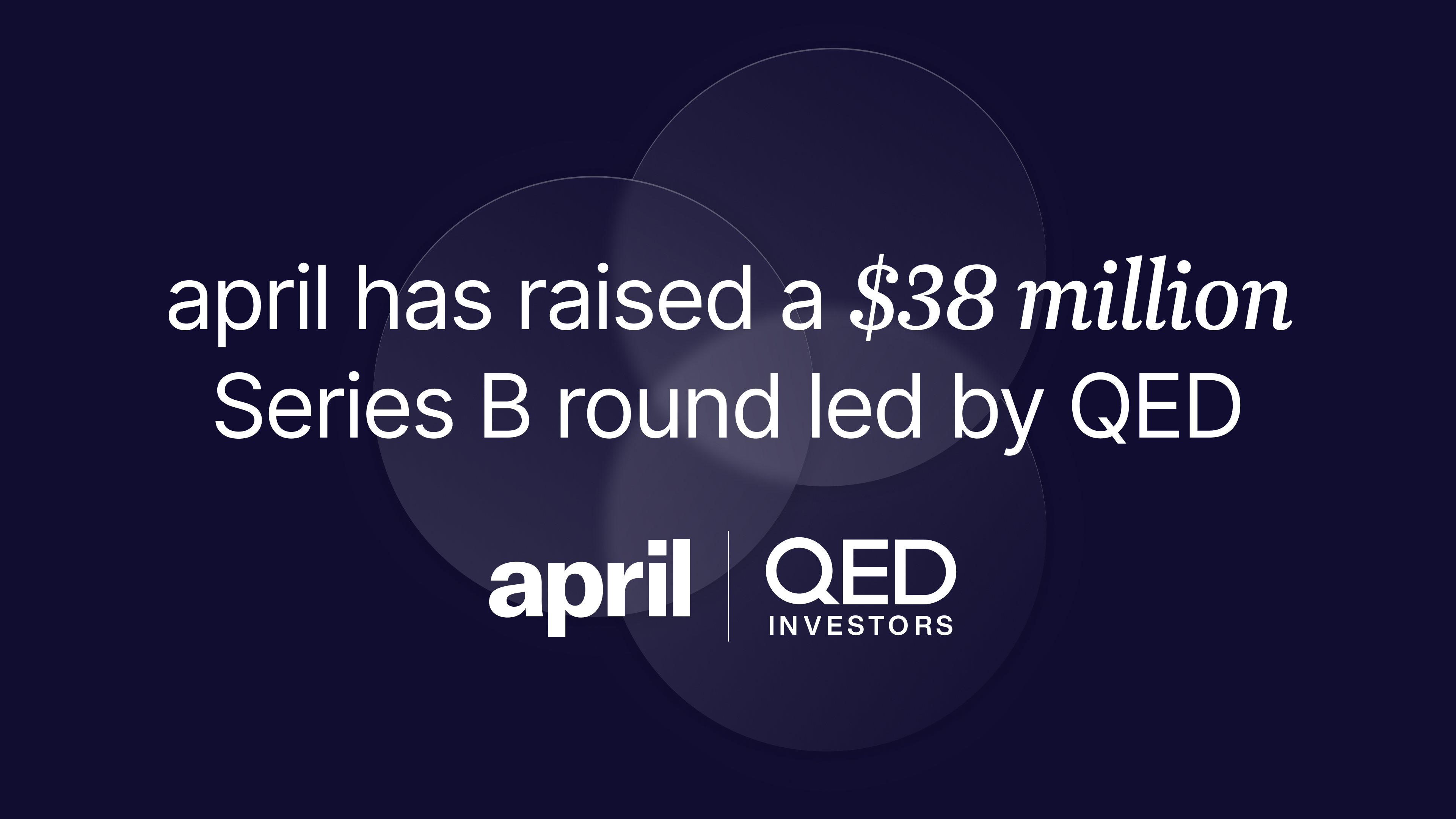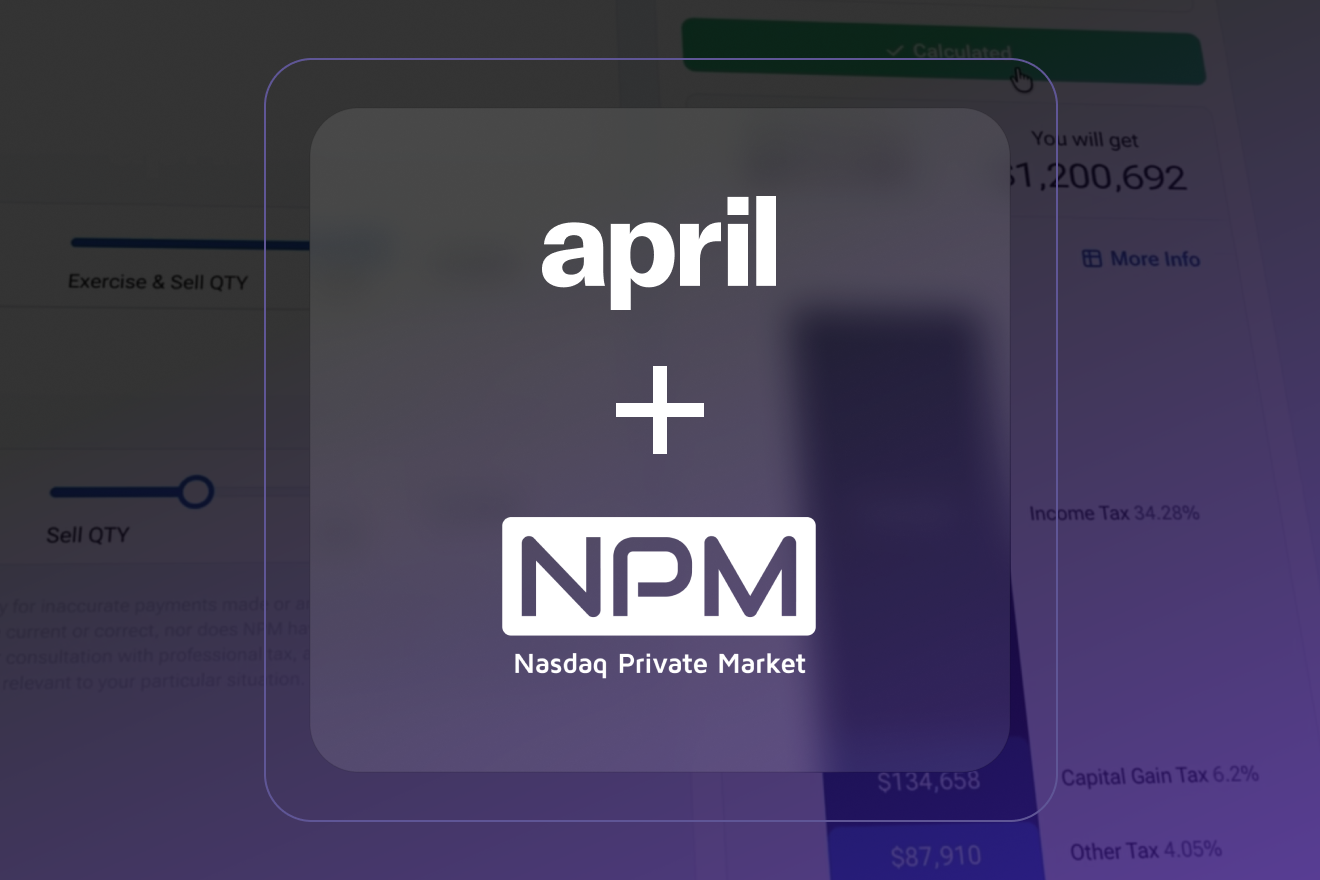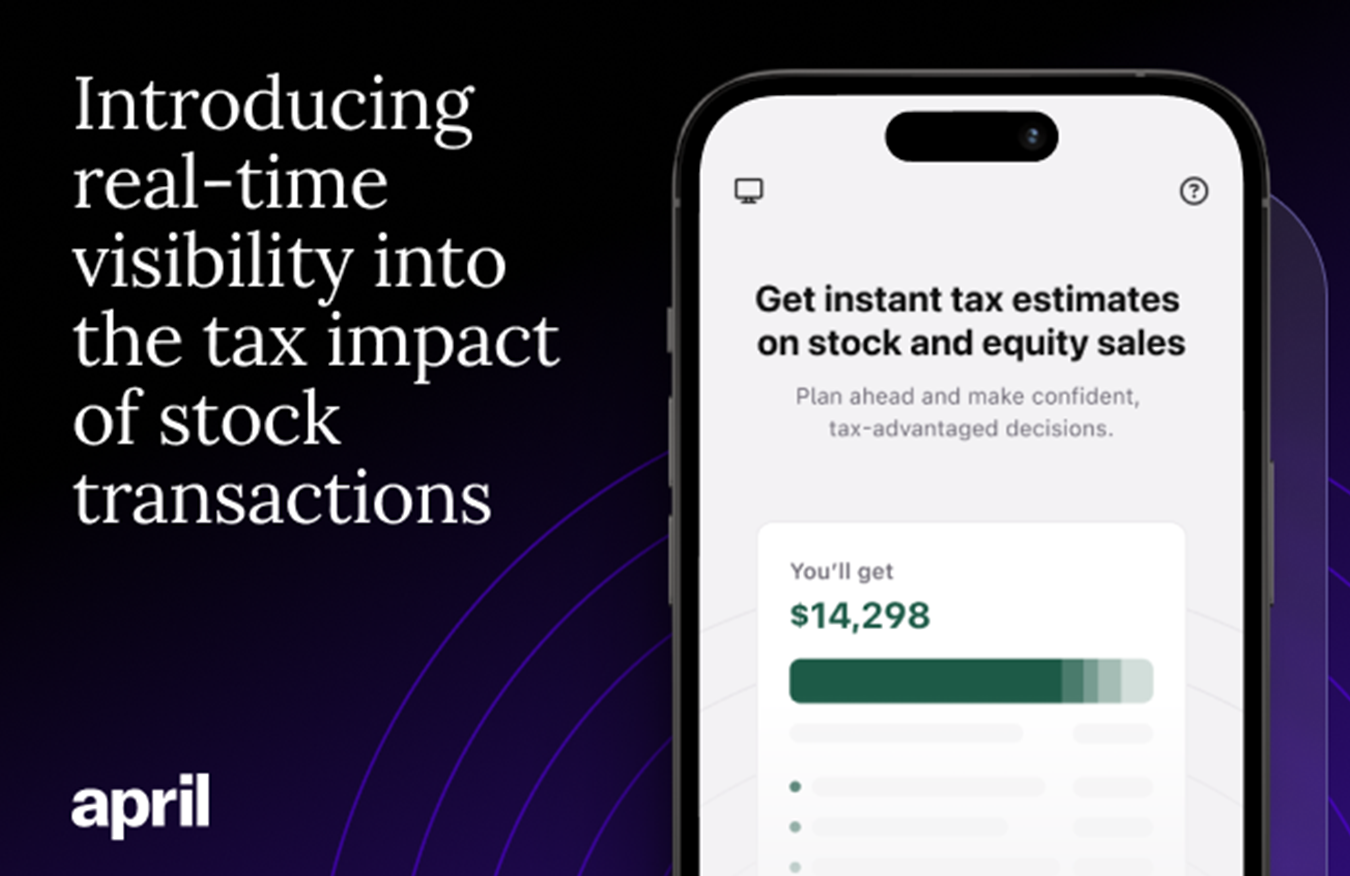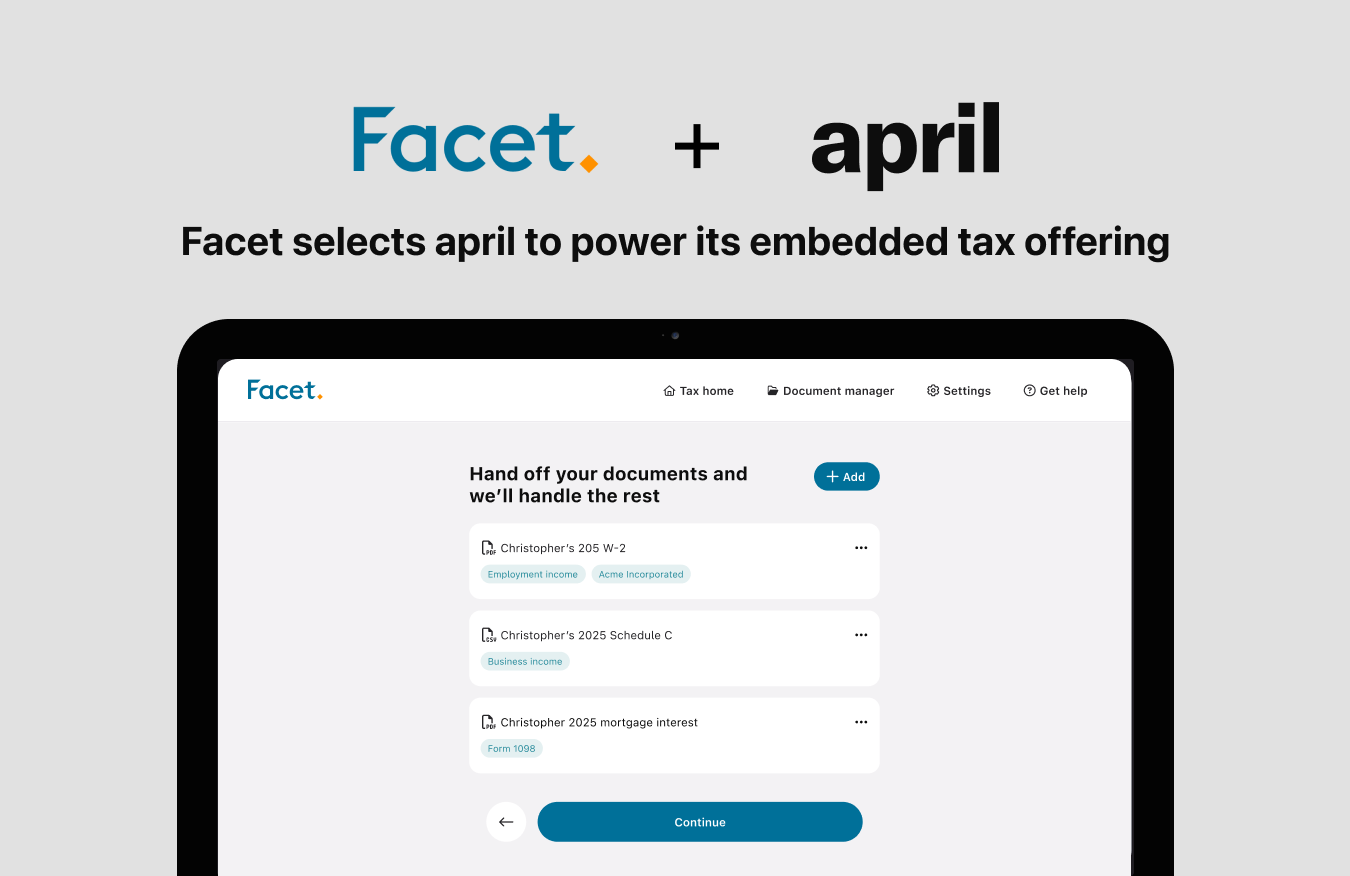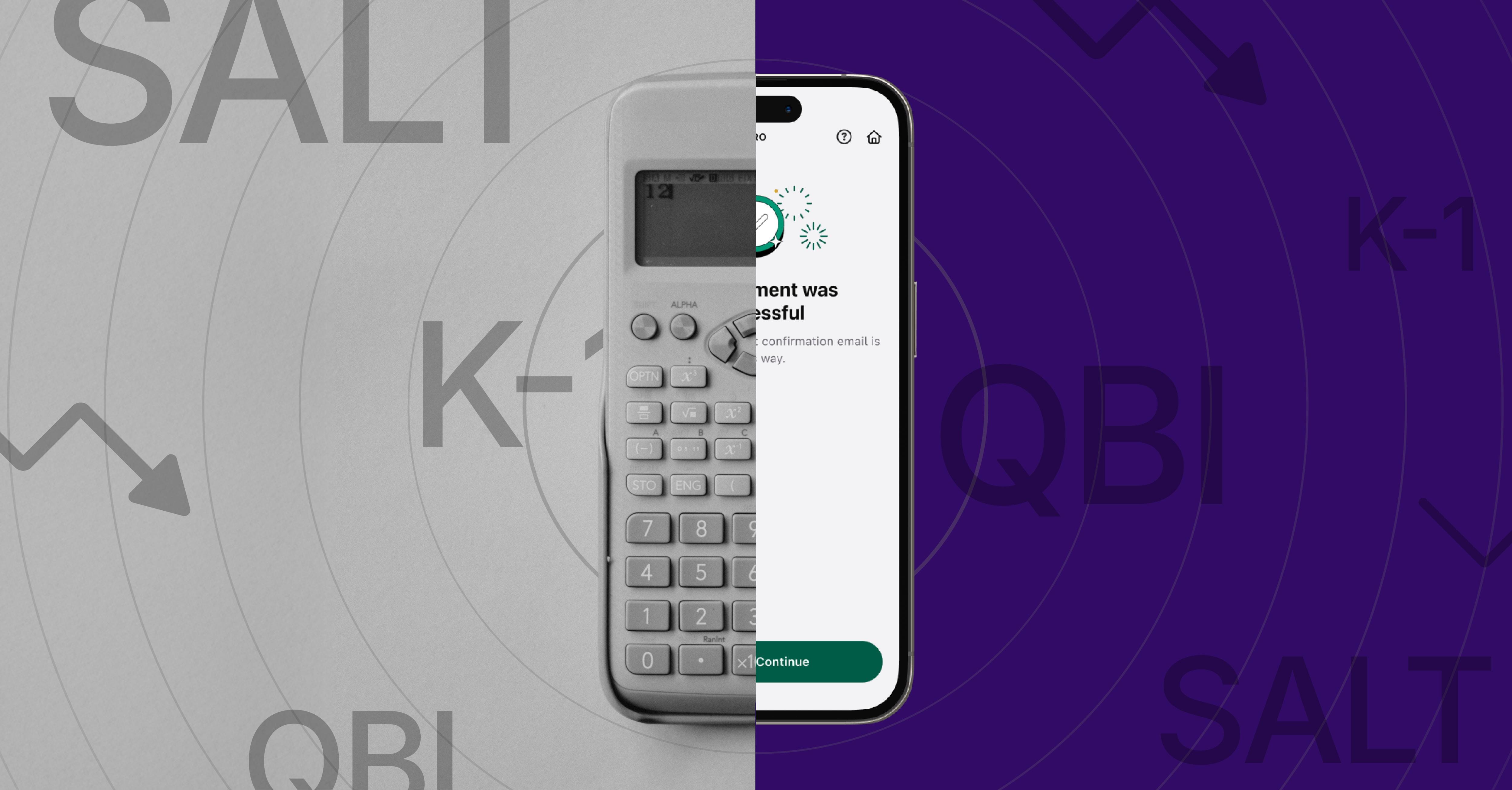Pill Text
Pill Text
Pill Text
Pill Text
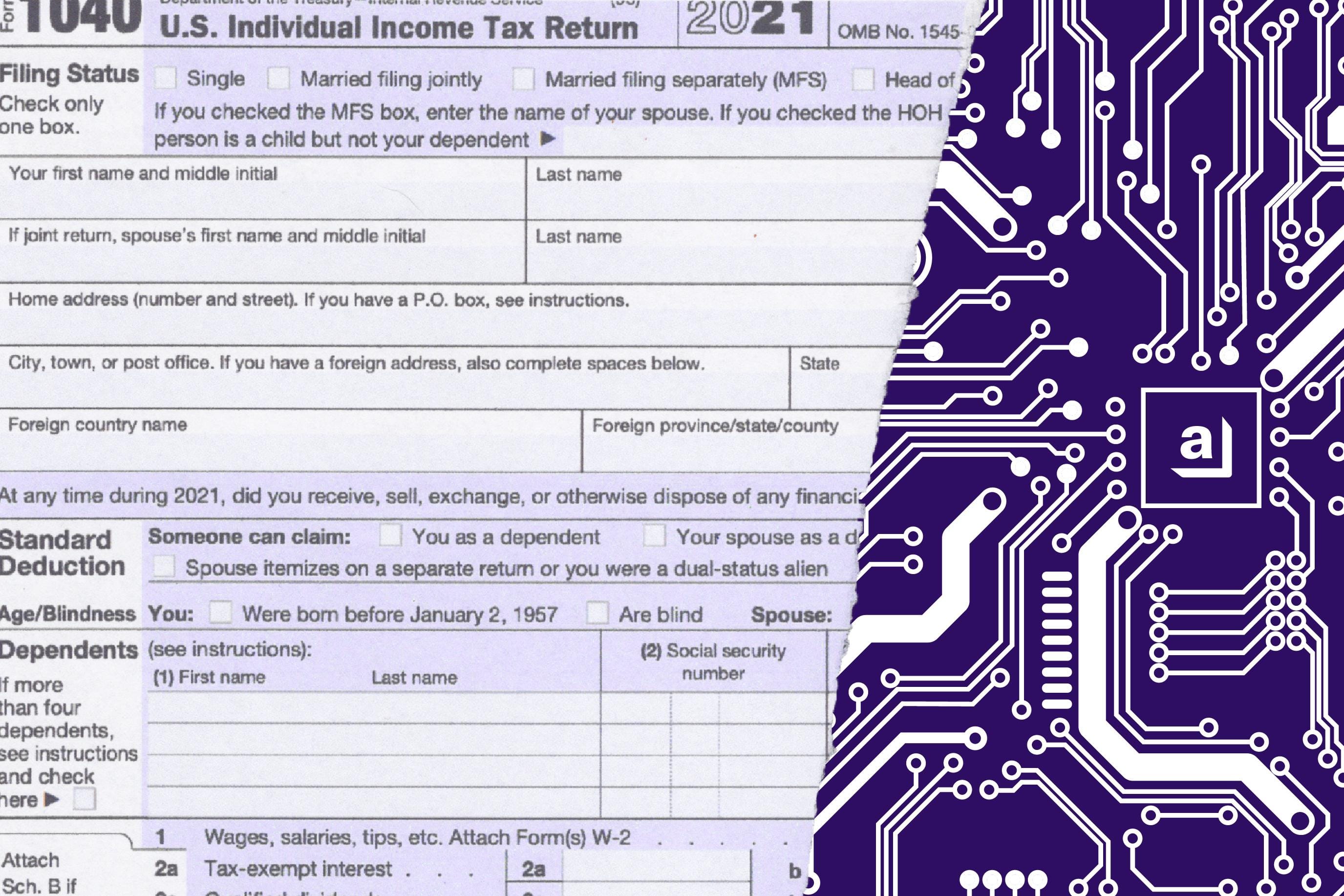
There’s an obvious difference between filing with a CPA and doing it yourself. But the differences across tax filing software — while less visible — are just as critical. What’s under the hood matters, especially for embedded experiences.
Fintechs and financial institutions embedding tax filing can’t afford to cut corners. They need compliant, customizable solutions that scale, without introducing unnecessary vendor risk or third-party dependencies. That’s why we built april’s tax engine from the ground up: a modern, AI-powered stack with a unified UX architecture.
Owning the full stack isn’t just a technical choice. It’s a strategic one. It means greater control, faster innovation, and reduced exposure to third-party vulnerabilities.
Streamlined filing experience
Out of thousands of potential questions, most taxpayers on april answer fewer than 75— a direct result of our dynamic, adaptive approach to tax filing.
Traditional tax software follows static, linear workflows that ask every potentially relevant question, regardless of context. This results in unnecessary friction, user confusion, and longer completion times.
april’s unique tax engine integrates federal and state requirements into a unified, personalized flow that predicts and surfaces only the most relevant next question. The result: minimal user input, lower drop-off, faster time to file — all while maintaining accuracy, compliance, and driving industry-leading conversion rates.
Compared to the IRS reported 13 hours to complete a return, the median time to file with april is just 22 minutes, 39 seconds.
Better taxpayer support
Because april owns the full tax engine, our support team operates with complete visibility into system behavior, user flows, and real-time data. This eliminates the guesswork and time to triage that’s typical of more limited setups.
Our AI-powered chatbot resolves 62% of inquiries without human intervention. When escalation is needed, agents resolve most cases in under 11 minutes — aided by direct access to internal tooling and R&D. This integrated approach drives faster resolution times, higher accuracy, and lower operational overhead.
Support is available 7 days a week. We maintain a category-leading NPS of ~65, and a 4.6 Trustpilot rating based on nearly 2,000 reviews.
For partners, this translates into stronger user trust and conversion: as high as 99 federal refund deposit rate and a 95% opt-in rate for taxpayer data sharing.
Security that industry leaders and taxpayers can trust
Tax is one of the most sensitive categories in fintech: it touches social security numbers, employment history, income data, investment disclosures, and more. It’s not just PII, it’s the taxpayer’s full financial picture.
Bolt-on solutions often rely on chains of third-party vendors to handle, process, and store that data—introducing more risk with every handoff. Every extra vendor is a new attack vector, a new unknown, and a new complication for auditors and infosec teams.
april’s tech stack is natively built, with no third-party dependencies in the core filing workflow. That means:
-
Fewer data transfers → Smaller attack surface.
-
Clearer audit trails → Easier due diligence and faster compliance sign-offs.
-
Greater control → Faster response times to vulnerabilities or legislative changes.
The result: april is SOC 2 Type 2 certified and the first nationally licensed e-File provider purpose-built for embedded use.
A unified tax experience that drives loyalty and deepens product engagement
By building and owning the tax engine, april enables full data portability — not just across our own products, but into and out of partner ecosystems. With user consent, data flows both ways, enhancing the filing experience and fueling downstream value: direct deposit switching, personalized offers, lifecycle marketing, and credit model improvement.
For partners, this integration translates directly to business outcomes. Users who engage with april’s tax planning tools convert at a 26% higher rate when it’s time to file. When W-2 data is integrated, median filing time drops by nearly 50%, delivering a faster, more seamless user experience.
More importantly, this level of integration builds loyalty: users who plan, file, and manage tax within the partner experience remain anchored to the platform year-round — not just during tax season. It also turns tax data into a strategic asset, powering more relevant marketing, deeper product personalization, and higher lifetime value across the partner’s ecosystem.
Related Content
Related Content
Related Content
Related Content
There's more where this came from

